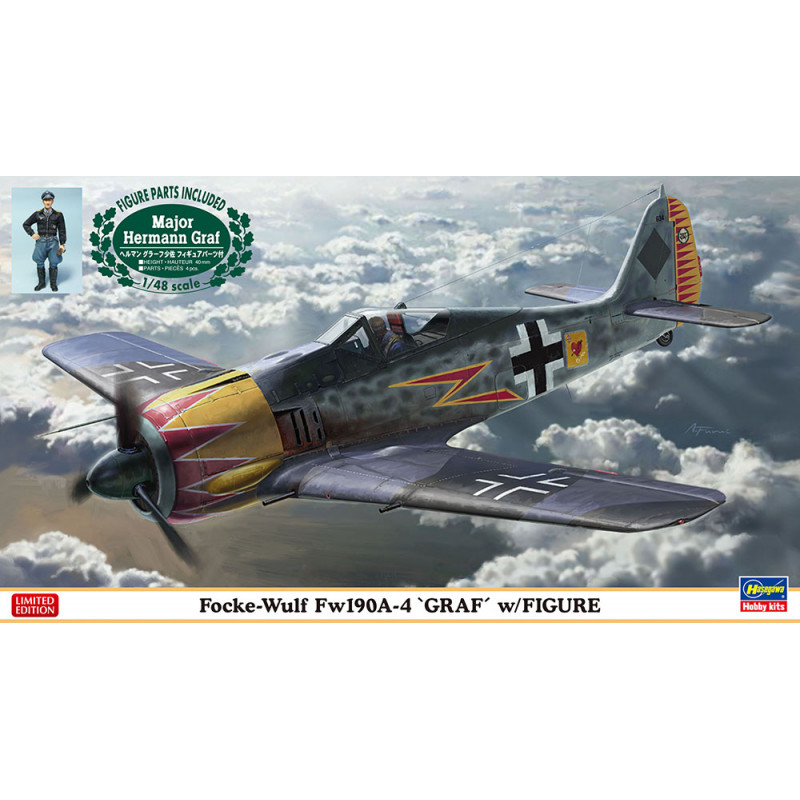The Focke-Wulf Fw190 is a single-seat, single-engine German fighter aircraft of World War II.
At the end of 1937, the Reich Air Ministry ( Reichsluftfahrtministerium - RLM ) sent an inquiry to production plants in Germany giving specifications for a new fighter, which was to be an alternative to the Bf109 if it turned out that aircraft from other countries were better than the Messerchmitt.
The project started in 1938, a wooden mock-up of the aircraft was built at the beginning of the year, and construction of the Fw 190 V-1 prototype began in the autumn. The flight took place on June 1, 1939 at Bremen airport by the factory's chief flight engineer Hans Sander. The aircraft met the intended requirements, and also had a few flaws. After the flight, it was transferred for further testing to the Luftwaffe facility in Rechlin, where during flights it reached a dizzying - for the time - speed of 595 km/h at an altitude of 4,000 meters. It was then returned back to the factory, where its defects were corrected and various modifications were made. The second prototype of the Fw 190 V-2 was flown on October 31, 1939, and presented to Herman Göring in 1940; it was crashed on March 4, 1940. The aircraft was produced between 1941 and 1945 in quantities of more than 18,000 - 22,000 units (the exact number is not known) in many versions.
Want to know the history of this aircraft ? See TU
Plastic model to be glued together by the Japanese company Hasegawa. The kit does not include paint and glue.
Specifications:
- Manufacturer: Hasegawa
- Scale: 1/48
- Product code: 07492
For more information and photos, visit the manufacturer's website.
A little history on the video:
And, how does the restored Focke-Wulf Fw190 fly ?
Focke-Wulf F190 vs. Spitfire:






